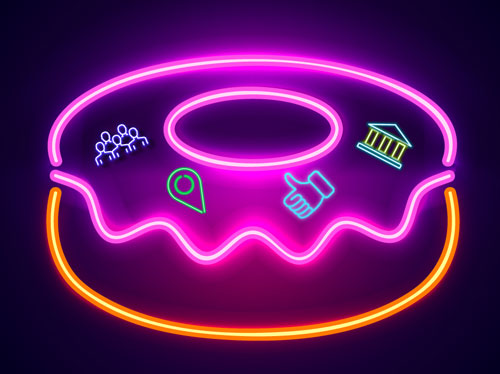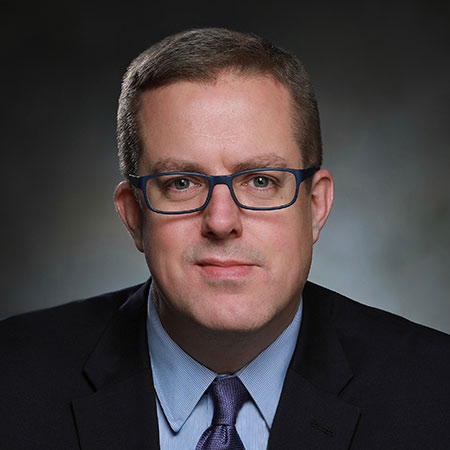The annual ‘Baker’s Dozen’ has even more in store for 2021
 By Alex Baker
By Alex Baker
Happy New Year indeed. Big ups to Father Time for his stubborn persistence, finally ending a miserable 2020. We have numerically arrived at 2021 CE and there will be no recount. Despite the public health and political challenges, this is a year full of opportunity for IES Members. Here are a few government affairs and policy matters that may be of interest.
- The U.S. Department of Energy’s Lighting R&D Workshop will be a free virtual event this year, cosponsored again by IES. Scheduled for February 1-4, this will be the 18th Workshop, but this one will take place right at your office desk, work bench, kitchen table, linen closet, ironing board or wherever you currently work.
- D.C.’s political winds have turned and calmed to something not measured on Saffir-Simpson hurricane scale. The selection of Former Secretary of State John Kerry to serve as U.S. Special Presidential Envoy for Climate signals to industry globally that America’s Executive Branch is ready to embrace the changes required by the Paris Agreement, to which President-Elect Joe Biden intends to recommit the U.S. on Day 1. Energy efficiency—including lighting—will play a substantial role in meeting these commitments. The Alliance to Save Energy, with IES as a member, will provide Congressional leadership in this space, with all 12 members of the Alliance’s Honorary Board reelected in November.
- Day 3 of the incoming administration will mark the fourth anniversary of White House staff introducing the electorate to “alternative facts,” a term and concept subsequently misapplied daily to sciences both hard and soft. Especially with several promising vaccines poised to reign in humanity’s COVID-19 suffering, look for newly elected and appointed leaders in the U.S. to once again elevate science to where it properly belongs in a modern, productive society.
- The High-Performance Buildings Coalition is also eyeing the first 100 days, along with the preceding lame duck session for which expectations have been set painfully low. As we have grown to expect, the expansive clean energy bill passed in the House in September (HR4447) faces a Senate with no appetite to develop a companion bill likely to be thwarted. IES is a member of this coalition, for whom I serve as secretary. Policy priorities for the 117th Congress are being drafted now. New ideas from IES Members are always welcome.
- The market is flooded with germicidal ultraviolet devices in the complete absence of measurement standards, and proprietary measurement methods appear to be inconsistent at best. Fortunately, help is on the way. Within the Testing Procedures Committee (TPC), Dr. Cameron Miller is leading IES and International Ultraviolet Association members in the development of new standards for the measurement of ultraviolet radiation from discharge and solid-state sources. Look for ANSI/IES/IUVA LM-TBD methods of measurement to be published this year.
- In early 2021 look for the new ANSI/IES TM-21-21 Calculator with the latest standard revision. This will be an enormously helpful tool for bringing industry luminous flux maintenance projections into alignment with the standard. Remember, TM-21 limits projections to six times the LM-80 testing duration. A 300,000-hour projection to L70 requires 50,000 hours of LM-80 testing. No one has that.
- In September the IES signed a Project Agreement with two divisions of the National Park Service “to collaborate on the development of IES outdoor lighting standards that address the needs of national parks.” The project will kick off this year with IES and NPS both bringing experts to the table, and the resulting standards are expected to “provide guidance for interested federal, state, local and international parks, and other protected areas having similar needs.”
- With the Five Principles for Responsible Outdoor Lighting framing discussions, IES, the Massachusetts chapter of the International Dark-Sky Association (IDA), and IDA staff have jointly submitted a proposal to the Massachusetts Board of Building Regulations and Standards to fully shield uplight from luminaires with output over 1,000 lumens. It includes more than a dozen exemptions to maintain lighting design freedom. If successful, one day Massachusetts residents will be able to lay on the grass in Boston Common and stare up at the stahhs. Sorry, I had to.
- The Five Principles conclude with a recommendation to “limit the amount of shorter wavelength light to the least amount needed,” but presently lighting practice has no suitable metrics for this purpose. Correlated color temperature, vigorously and erroneously defended by some dark-sky proponents as the right metric, is not predictive of light pollution potential. Look for the IES, IDA and NPS to work together in the coming year to take initial steps toward identifying or creating a better-suited metric.
- The California Energy Alliance, of which the IES is a member, has grown tremendously over the past year in terms of organization, membership and influence. Outcome-based code work continues, and the CEA recently won a nearly $1 million grant from the California Energy Commission (CEC) to “reduce electricity use of active and standby modes for residential and commercial plug load devices, [and] provide information that may inform future updates to codes and standards and reduce commercial plug load electricity use.”
- The CEC’s 2022 Title 24 code development cycle continues, with input from IES and its members. Also underway as required by California Senate Bill 49 (2019), the Commission recently opened docket 20-FDAS-01 to begin developing Flexible Demand Appliance Standards (FDAS). This essentially amounts to an expansion of Title 20 goals to “also manage energy loads to help maintain electrical grid reliability.” Lamps are a regulated appliance under Title 20, so we’ll soon learn what CEC has in mind for FDAS and lighting.
- The IES has recently seated the California Regulations Committee, to be co-chaired by IES Fellows Jim Benya and Chip Israel, representing Northern and Southern California respectively. This committee will deliberate over regulatory actions with Title 20, Title 24 Parts 6 and 11, and Joint Appendix 8 (JA8), and will develop IES positions and strategies.
- I have the pleasure of reporting this progress to you, but outreach is a team effort with my colleagues Brian Liebel and Mark Lien, and we have a few more tricks up our sleeves this year. Please stay healthy and stay tuned into the IES.

